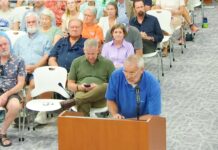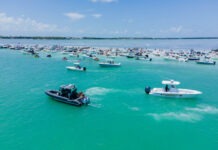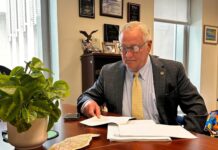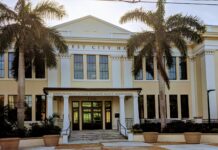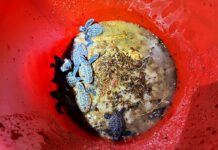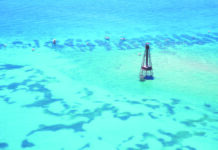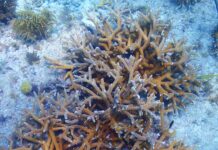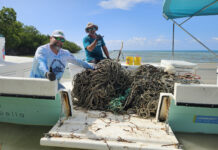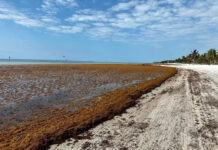Florida Keys National Marine Sanctuary released its Restoration Blueprint on August 20, 2019, opening five months of public comment.
The document includes four alternatives. Alternative 1 is no action, meaning the current boundaries, marine zones, and regulations would remain in place. That does not mean that the condition of the natural and cultural resources will remain the same. Alternatives 2, 3, and 4 propose changes with Alternative 3 being the NOAA-preferred option. The sanctuary’s non-regulatory management plan is also available for review. It involves functions such as restoration, buoys, permits, education, and collaborations with state and federal entities on issues including water quality and law enforcement.
Here are the major steps in the federal rulemaking process as they relate to the Restoration Blueprint:
Passage of Enabling Legislation
Deteriorating water quality, declines in marine ecosystem health, large vessel groundings, and oil drilling proposals prompted the United States Congress to act. Florida Keys Representative Dante Fascell introduced the Florida Keys National Marine Sanctuary and Protection Act with Senator Bob Graham as sponsor in the Senate. On November 16, 1990, President George H.W. Bush signed into the bill into law. The sanctuary is administered by the National Oceanic and Atmospheric Administration in the Department of Commerce.
Regulatory Planning
Federal agencies are required to produce rulemaking planning documents. Following an initial rulemaking process, the sanctuary’s original marine zones and regulations became effective in 1997. More rulemaking allowed the sanctuary to add the Tortugas Ecological Reserve in 2001, and revise its management plan in 2007. The Restoration Blueprint represents the first comprehensive review of the sanctuary’s boundaries, marine zones, regulations, and management plan in more than 20 years. As a draft environmental impact statement, the Restoration Blueprint proposes changes, states the need for those changes, and presents the economic impact of proposed changes.
Engaging Stakeholders
Stakeholder engagement is crucial to the rulemaking process. Information is gathered before rules are drafted and during the drafting. Florida Keys National Marine Sanctuary, working with its advisory council, held more than 70 public meetings where input was received from a broad range of stakeholders. That process began in 2012 with an Advance Notice of Proposed Rulemaking in the Federal Register. The resulting Restoration Blueprint embodies what NOAA has learned through more than 20 years of cutting-edge science, technical experience, and local community involvement.
Proposal
After appropriate levels of agency management approve the proposed rules, the agency submits a Notice of Proposed Rulemaking to the Federal Register that includes a statement describing the issues and how the proposed rules will address the issues. It lists the dates for public comment and the methods by which a citizen or group may comment. NOAA submitted the Restoration Blueprint to the Federal Register in August 2019.
Where we are now: Public Comment
Comment periods typically run for 30 to 60 days. Due to the complex nature of the document and the desire to inform and provide opportunity to as many stakeholders as possible, the Restoration Blueprint public comment period is 165 days.
NOAA will carefully review and consider all official comments. While NOAA has a preferred alternative, elements of all alternatives will be considered and, based on public input, scientific data, and subsequent changes to resource conditions, a single proposal will be released for additional public comment. While the Restoration Blueprint, in its current state, includes concepts for consideration, the refined proposal will include definitive language.
Final Rule
If NOAA takes a final action, a final environmental impact statement and final rulemaking will be published in the Federal Register. That would be followed by an opportunity for review by the governor of Florida as well as by Congress.
- Contributed
